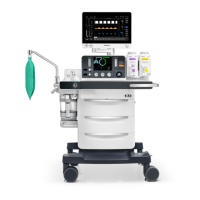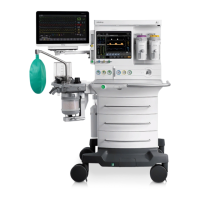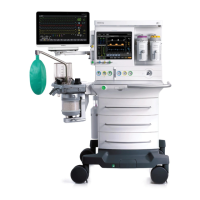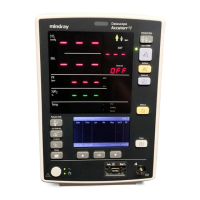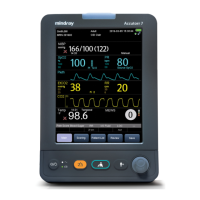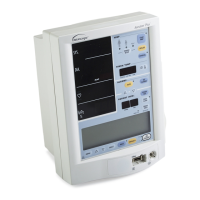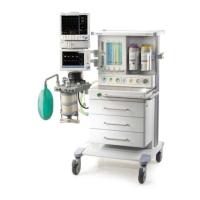Flow Control System Test Preoperative Tests
4 - 22 046-004667-00 A7™ Operating Instructions
4.12 Flow Control System Test
WARNING: If N
2
O is available and flows through the system during this test, use a
safe and approved procedure to collect and remove N
2
O gas.
WARNING: Incorrect gas mixtures can cause patient injury. If the O
2
:N
2
O ratio
system does not supply O
2
and N
2
O in the correct proportions, do not
use the system.
CAUTION: Slowly open the cylinder valves to avoid damage. Do not use excessive
force on the flow controls. After performing the cylinder tests, close all
cylinder valves if cylinder supplies are not used.
CAUTION: When the electronic mixer is disabled, the backup flow control valve
can work. The initial flow is 1 L/min of O2. The backup flow display only
has a total flowmeter which range is up to 10 L/min.
CAUTION: Turn the backup flow controls slowly. To avoid damaging the control
valves, do not turn further when the flowmeter reading is outside the
range. When turning a flow control knob clockwise to decrease flow,
the flowmeter should reach 1 L/min before the knob reaches its most
clockwise mechanical stop (off) position. Do not turn any further when
the knob has reached the off position. Turning a flow control knob
counterclockwise increases flow.
The flow control system includes Electronic Flow Control System (hereinafter referred to as EFCS)
and Backup Flow Control System (hereinafter referred to as BFCS). Normally, EFCS is used.
Perform EFCS and BFCS tests before any case:
1. Connect the pipeline supplies or slowly open the cylinder valves.
2. Set the system switch to the ON position.
3. Select Setup softkey > General tab and set the Fresh Gas Control to Direct Flow.
4. Set the Balance Gas to Air.
5. Adjust the Air flow. Ensure that the displayed reading of electronic flowmeter is consistent
with the setting.
6. Set the Balance Gas to N
2
O.
7. Adjust the N
2
O flow gradually. Ensure that the O
2
flow increases with the increase of N
2
O
flow and that the O
2
and N
2
O flows are in the proportion of 1 to 3.
8. Set both O
2
flow and N
2
O flow to 5 L/min.
9. Turn off the O
2
pipeline supply.
10. Push the O
2
flush button to release the pressure inside the machine.
11. Check that the technical alarm O
2
Supply Failure appears, N
2
O flow is zero, and O
2
flow
stays at 5 L/min.
12. Check that N
2
O flow is available and is finally stabilized at 5 L/min after the O
2
pipeline
supply is turned on.
13. Push the BFCS button and check that the BFCS is deployed normally. Check that the BFCS is
automatically deployed in position and the prompt message Backup Flow Control is
enabled displays.
14. After checking that the BFCS is deployed, visually check the total flowmeter for basal flow of
approximately 1 L/min.
15. Adjust the Air needle valve. Increase Air flow gradually and check that the total flow
continues to rise to more than 10 L/min. Close the Air needle valve.
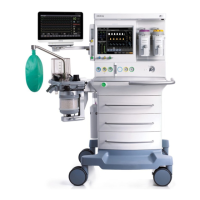
